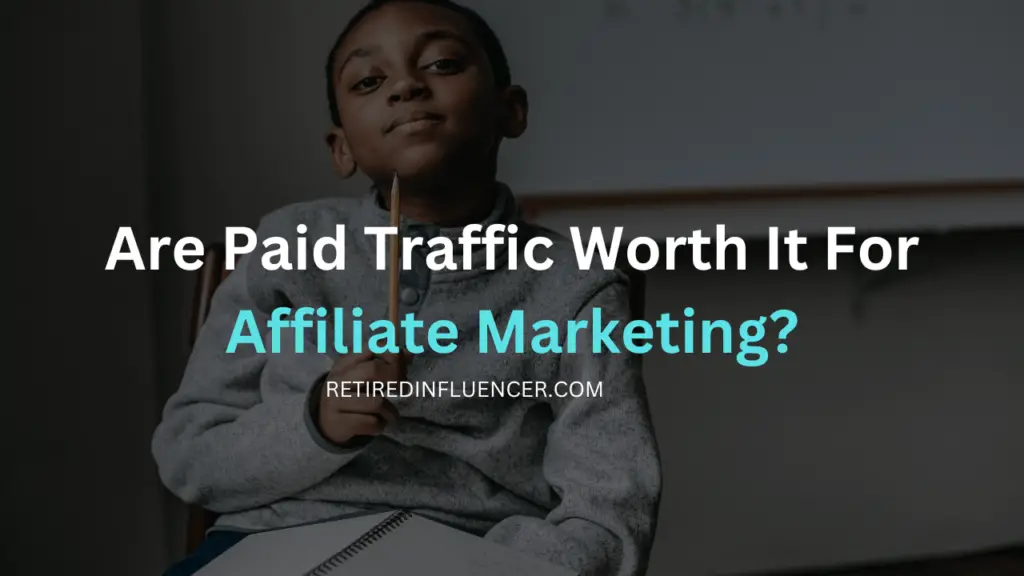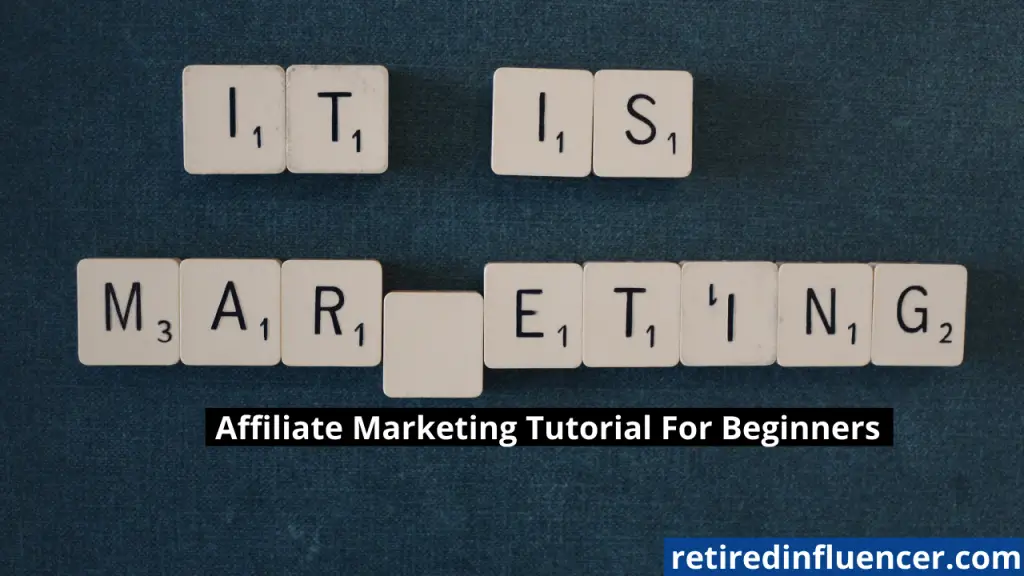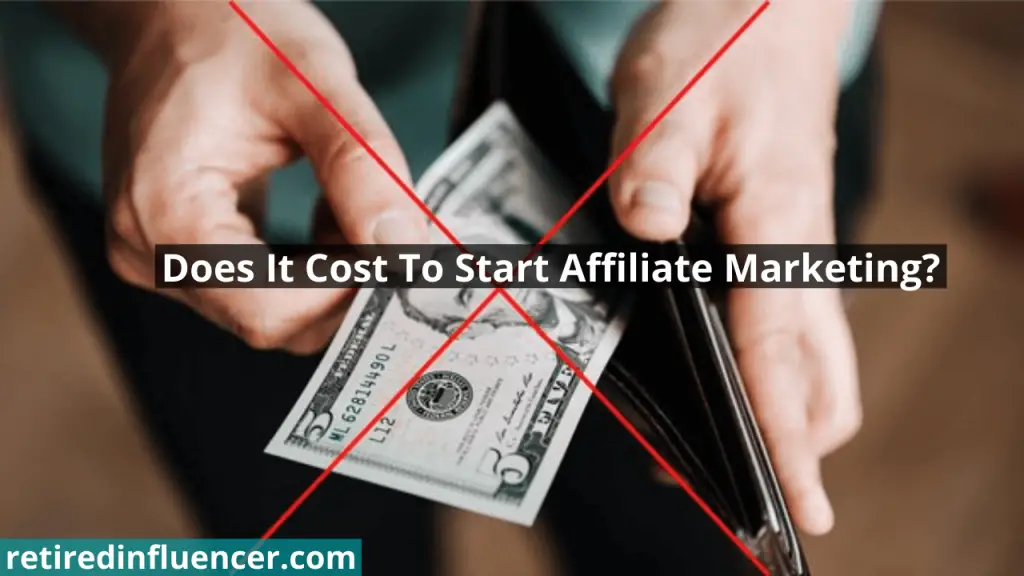“Are paid traffic worth it for affiliate marketing?” is a question that many people often ask.
To put it simply – yes, paid traffic is worth it for affiliate marketing. Paid traffic is a powerful tool for affiliate marketers and can help bring in quick results as it allows you to target specific audiences and drive traffic to the advertiser’s website quickly.
However, it’s important to note that paid traffic can be expensive, and there is no guarantee that it will result in conversions or sales.
As an affiliate, you need to carefully consider your target audience, the cost of advertising, and the potential return on investment before investing in paid traffic.
Read on, as I share with you the pros and cons of using paid traffic for affiliate marketing and help you decide whether it’s worth investing in and many more.
So, let’s dive in!
Table of Contents
Are Paid Traffic Worth It For Affiliate Marketing?
Paid traffic can be an effective way to quickly generate traffic and sales, but it can also be expensive and sometimes risky especially if you don’t have proper knowledge about it.
The cost of paid traffic can quickly add up, especially if you’re not seeing a good return on investment.
Additionally, there is always the risk that your ads won’t perform as well as you had hoped, leaving you with a significant loss.
However, paid traffic can be a valuable tool for affiliate marketers who are looking to scale their business, reach a larger audience, and increase their affiliate sales or revenue.
Let’s define what paid traffic is.
What Is Paid Traffic?
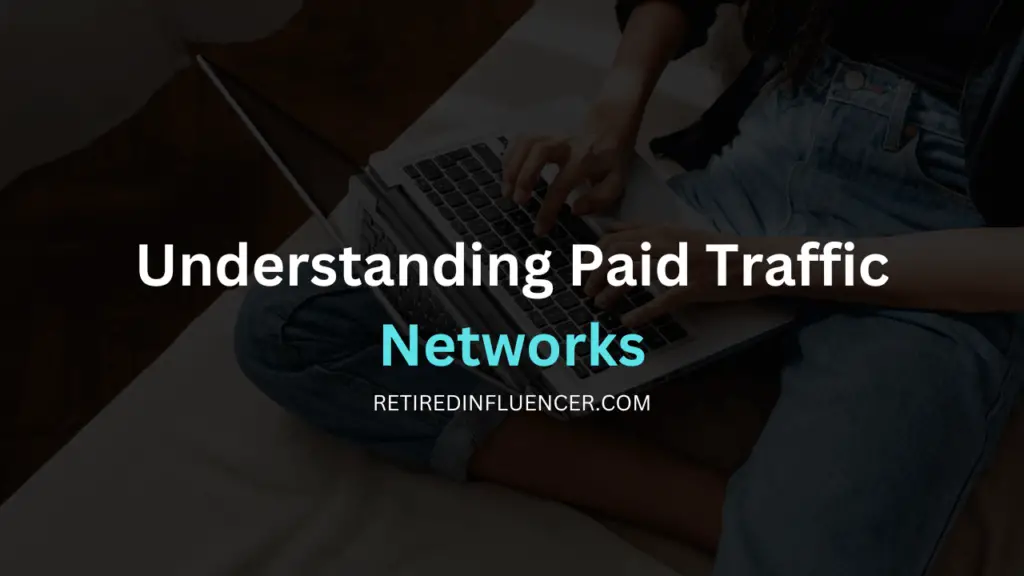
When it comes to affiliate marketing, paid traffic refers to any traffic that you pay for, such as advertising on social media platforms or search engines.
Essentially, you are paying to have your affiliate link or website displayed to potential customers.
There are many different types of paid traffic, including:
- Social media advertising (Facebook, Instagram, Twitter, etc.)
- Search engine advertising (Google Ads, Bing Ads, etc.)
- Display advertising (banner ads, pop-up ads, etc.)
- Native advertising (sponsored content, promoted posts, etc.)
The main advantage of paid traffic is that it can provide quick results.
Unlike organic traffic, which can take years of hard work to build up, paid traffic can start driving visitors to your site almost immediately.
Additionally, paid traffic can be more targeted and allow you to reach your ideal audience more effectively.
However, it’s important to note that paid traffic can be expensive, and there is no guarantee that it will lead to conversions or sales.
It’s important to have a solid strategy in place and to continually monitor and adjust your campaigns to ensure that you are getting the best results possible.
Affiliate Marketing – What Is All About?
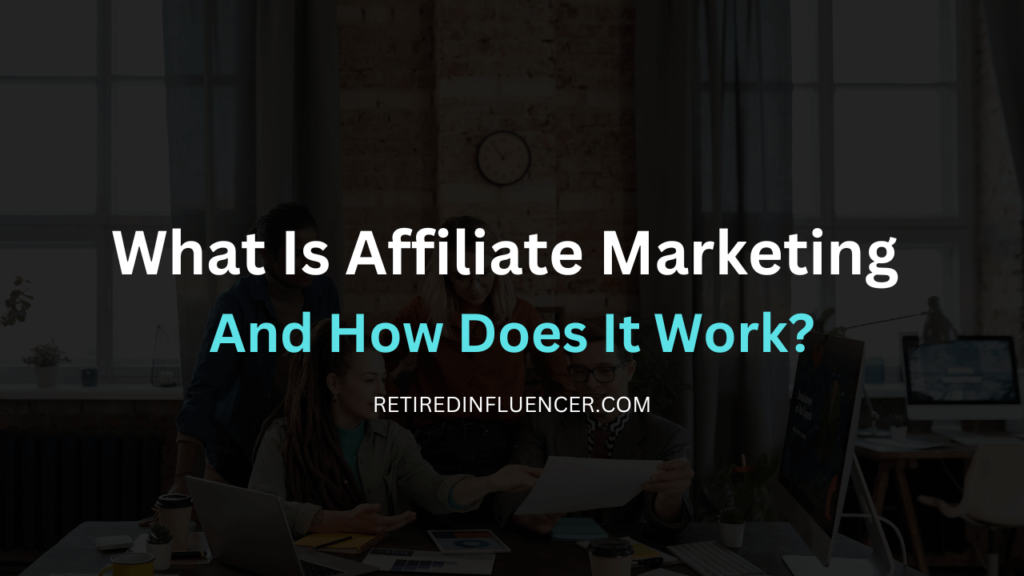
Affiliate marketing is a performance-based marketing model in which an advertiser, vendor, or merchant pays a commission to an affiliate (publisher) for each sale or conversion made through their unique affiliate link.
Affiliate marketing rapidly growing, as it allows advertisers to reach wider audiences or customers and affiliates to earn passive income.
One of the biggest advantages of affiliate marketing is that it enables advertisers to leverage the reach and influence of affiliates to promote their products or services.
Affiliates can use various channels to drive traffic to the advertiser’s website, including social media, email marketing, content marketing, and paid traffic.
Ultimately, affiliate marketing can be a lucrative and rewarding business model for both advertisers and affiliates.
By leveraging the reach and influence of affiliates, advertisers can reach a wider audience and drive more conversions, while affiliates can earn passive income by promoting products or services they believe in.
However, it’s important to approach affiliate marketing with a strategic and thoughtful mindset.
And to carefully consider the costs and benefits of different advertising channels, including paid traffic.
- Ps. I wrote another article where I went into more detail on what affiliate marketing is and how it works. Check it out!
Benefits of Paid Traffic for Affiliate Marketing
There are so many benefits you can drive from using paid traffic for your affiliate marketing business.
Below are a few benefits of paid ads for affiliate marketing:
Increased Visibility
One of the biggest benefits of “paid traffic for affiliate marketing” is the increased visibility it can provide.
With paid traffic, you can put your affiliate offers in front of targeted and larger audiences than you would be able to with organic traffic alone.
This increases visibility and can help you attract more potential customers and ultimately generate more affiliate sales.
Targeted Traffic
Paid traffic also allows you to target specific audiences based on factors such as demographics, interests, and behaviors.
This means that you can ensure that your affiliate offers are being seen by the people who are most likely to be interested in them.
Targeted traffic can lead to higher conversion rates and ultimately more revenue for your affiliate marketing business.
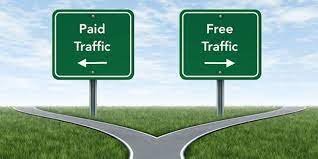
Quick Results
Another benefit of paid traffic is the speed at which you can see results. Unlike organic traffic, which can take months to build up, paid traffic can start generating results almost immediately.
This quick turnaround time can be especially useful if you are looking to test and validate your affiliate marketing strategy quickly.
In summary:
paid traffic can provide several benefits for affiliate marketing, including
- Increased visibility
- Targeted traffic
- And quick results
By leveraging these benefits, you can attract more potential customers and generate more revenue for your affiliate business.
Drawbacks of Paid Traffic for Affiliate Marketing
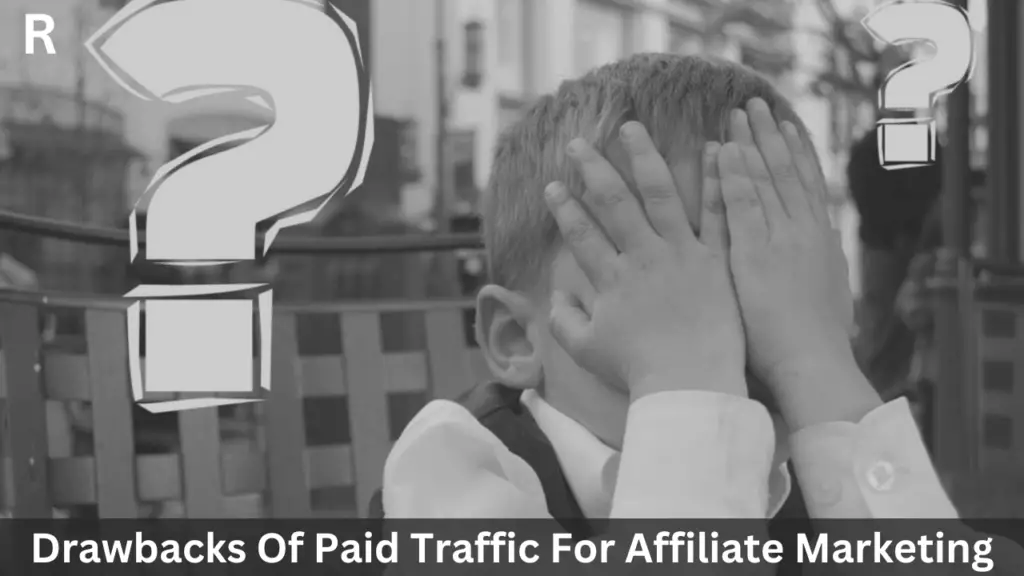
While paid traffic can be an effective way to drive traffic to your affiliate offers, it’s essential to be aware of the downside associated with it.
Here are a few drawbacks to paid traffic for affiliate marketing:
High Costs
One of the “biggest drawbacks of paid traffic for affiliate marketing” is the high cost associated with it.
Paid traffic can be expensive, especially if you’re targeting high-traffic keywords or popular niches.
You’ll need to spend a significant amount of money on advertising to get the desired results, which can be a significant barrier to entry for new affiliates with limited budgets.
Low Conversion Rates
Another significant drawback of paid traffic for affiliate marketing is the low conversion rates that come with it.
Paid traffic sources like Google Ads or Facebook Ads can drive a lot of traffic to your landing pages, but that traffic doesn’t always convert into sales.
Conversion rates for paid traffic sources can be as low as 1-2%, which means you’ll need to spend a lot of money on advertising just to make a few sales.
Click Fraud
Click fraud is another major issue with paid traffic for affiliate marketing.
This normally occurs when someone clicks on your ads repeatedly without any intention of making a purchase.
This can drain your advertising budget quickly and prevent you from getting the results you’re looking for.
Most of the time click fraud can be difficult to detect and prevent, which means you’ll need to be vigilant and monitor your campaigns closely to avoid it.
OVERVIEW!
As an affiliate marketer, it’s important to weigh the pros and cons of paid traffic carefully and decide if it’s the right strategy for your affiliate business.
Factors to Consider Before Using Paid Traffic for Affiliate Marketing
Budget
One of the most important factors to consider before using paid traffic for affiliate marketing is your budget.
Paid traffic can be expensive, so it’s essential to have a clear idea of how much you can afford to spend.
You should also consider the potential return on investment (ROI) of your paid traffic campaigns.
It’s essential to calculate your ROI before starting any campaign to ensure that you’re not spending more money on advertisement than you’re earning.
Target Audience
Another important factor to consider is your target audience.
You should have a clear understanding of who your target audience is and what their interests and needs are.
This will help you choose the right traffic source and create ads that are relevant and appealing to your audience.
You should also consider the demographics of your target audience, such as age, gender, and location when choosing your traffic source.
Offer And Landing Page Quality
The quality of your offer and landing page is also essential when using paid traffic for affiliate marketing.
Your offer should be compelling and relevant to your target audience, and your landing page should be optimized for conversions.
You should also ensure that your landing page is mobile-friendly and loads quickly, as slow loading times can lead to high bounce rates and low conversions.
OVERALL!
paid traffic can be a great way to drive targeted traffic to your affiliate offers, but it’s important to consider these factors before getting started.
By carefully planning your campaigns and monitoring your ROI, you can ensure that your paid traffic campaigns are profitable and effective.
- Recommended Reading: How To Create Paid Ads For Affiliate Marketing

How Much Should You Spend on Paid Traffic?
When it comes to paid traffic, it can be tempting to throw a lot of money at it in hopes of achieving quick success.
However, it’s important to approach paid traffic with a strategic mindset and set a budget that aligns with your goals and resources.
One common approach is to start with a small budget and gradually increase it as you begin to see positive results.
This allows you to test different strategies and channels without risking too much of your budget upfront.
Another factor to consider is the cost per click (CPC) for your chosen traffic source.
But this can vary widely depending on the platform and your niche.
For example, Google Ads can have a CPC of several dollars for highly competitive keywords, while Facebook Ads may have a lower CPC but a broader audience.
Ultimately, the amount you should spend on paid traffic will depend on your specific goals and circumstances.
It’s important to track your results and adjust your budget accordingly to ensure you’re getting the most out of your investment.
- Recommended Reading: Which Is Better, Paid Ads Or Free Traffic For Affiliate Marketing
Which Paid Traffic Option is Best for Affiliate Marketing?
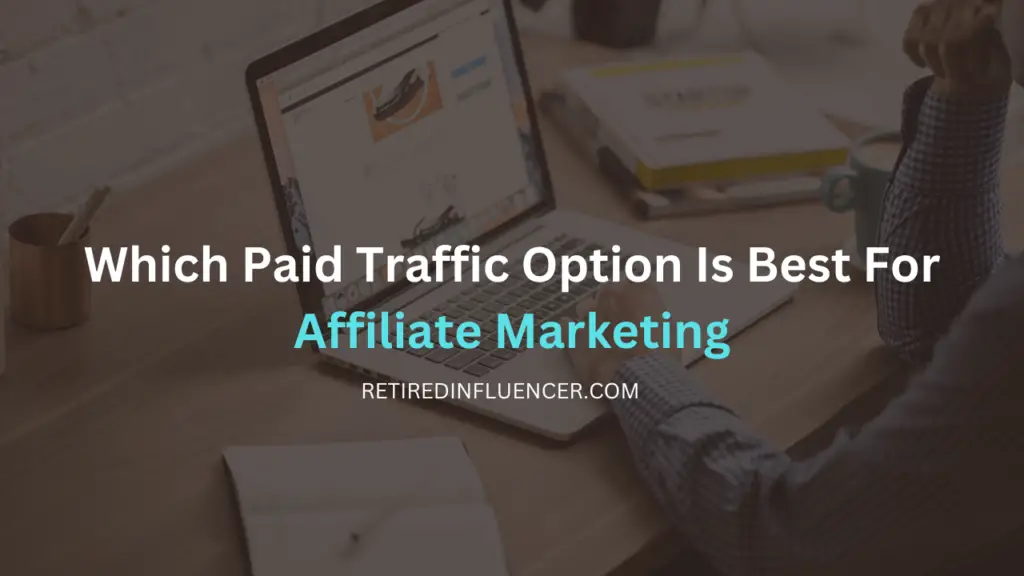
When it comes to paid traffic for affiliate marketing, there are several options to consider.
Here are some of the most popular paid traffic sources:
- Pay-Per-Click (PPC) Advertising: This involves paying for each click on your ad. PPC ads can be targeted to specific keywords, demographics, and locations. Google Ads and Bing Ads are popular PPC advertising platforms.
- Social Media Advertising: This involves paying for ads on social media platforms such as Facebook, Instagram, and Twitter. Social media ads can be targeted to specific demographics, interests, and behaviors.
- Native Advertising: This involves paying for ads that blend in with the content of a website or app. Native ads can be effective because they don’t disrupt the user experience.
- Display Advertising: This involves paying for banner ads on websites and apps. Display ads can be targeted to specific websites, demographics, and interests.
Which paid traffic option is best for affiliate marketing? The answer depends on your niche, target audience, and budget. Here are some considerations to keep in mind:
- Budget: Some paid traffic options, such as PPC advertising, can be expensive. Make sure you have a clear budget in mind before you start advertising.
- Niche: Some paid traffic options may be more effective for certain niches. For example, social media advertising may be more effective for promoting beauty products than display advertising.
- Target Audience: Consider where your target audience spends their time online. If they spend a lot of time on social media, social media advertising may be a good option.
- ROI: Keep track of your return on investment (ROI) for each paid traffic option. If a particular option isn’t generating a positive ROI, consider trying a different option.
Ultimately, the best-paid traffic option for affiliate marketing will depend on your specific situation. Consider your niche, target audience, and budget when deciding which option to try.
- Recommended Reading: How To Do Affiliate Marketing Without Paid Ads
What Are The Best Paid Traffic Networks For Affiliate Marketing

- Google Ads: Google Ads is one of the most popular paid advertising networks for affiliate marketing. It allows advertisers to bid on keywords related to their product or service and display ads on Google search results and other websites that are part of the Google Display Network.
- Facebook Ads: Facebook Ads is one of the most popular and effective paid advertising networks for affiliate marketing. With over 2.8 billion active users, Facebook provides a massive audience for affiliate marketers to target.
- LinkedIn Ads: LinkedIn Ads is an advertising platform offered by LinkedIn, the world’s largest professional networking site. It allows advertisers to target professionals based on their job title, industry, company size, and other factors.
PS. I wrote another article where I went into more detail on some of the best-paid traffic networks for affiliate marketing. Check it out!
Paid Ads Policy For Affiliate Marketing

When it comes to using paid ads for affiliate marketing, it’s essential to understand the policies and guidelines set by the advertising platforms.
Violating these policies can result in account suspension or termination, and even legal consequences in some cases.
Here are some general guidelines to keep in mind:
- Make sure the products or services you’re promoting comply with the advertising platform’s policies. Some products, such as tobacco or adult content, may be prohibited.
- Disclose your affiliate relationship in your ads. This can be done by using a disclaimer such as “This post contains affiliate links” or “I may earn a commission from purchases made through these links.”
- Avoid using misleading or deceptive advertising tactics. This includes false claims, fake testimonials, and misleading images or videos.
- Respect intellectual property rights. Don’t use copyrighted material without permission, and don’t use trademarks or logos in a way that implies endorsement or affiliation.
Each advertising platform may have specific policies and guidelines that you need to follow, so make sure to read and understand them before launching your ads.
For example, Google Ads has specific policies regarding ad content, landing pages, and ad targeting, while Facebook Ads has policies regarding ad content, targeting, and audience selection.
Paid ads can be a great way to drive traffic and increase conversions for affiliate marketing.
It’s important to do it in a way that is compliant with advertising platform policies and ethical standards.
- Recommended Reading: Is YouTube The Best Traffic Source For Affiliate Marketing
Over To You
Paid traffic can be worth it for affiliate marketing if it aligns with your goals, target audience, and budget.
Paid traffic sources, such as pay-per-click (PPC) advertising, can be effective if you can target your audience accurately.
You want to ensure that your ads are relevant to the interests and needs of your target audience to increase the likelihood of conversions.
Also, it’s crucial to monitor and analyze your campaigns regularly, adapting your strategies based on performance metrics and market conditions.

